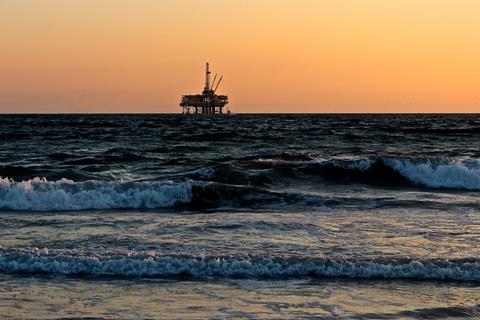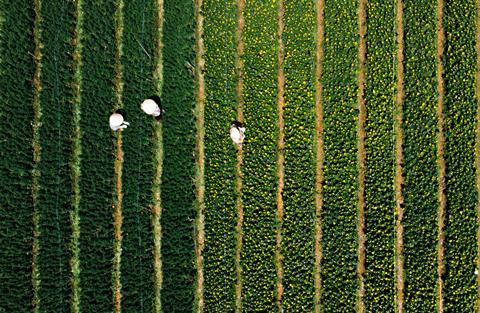Microbes are everywhere - the air we breathe, the water we drink or swim in, and the soil in which we grow plants. It is estimated that there are over 5 x 1030 microbes on Earth, and we have only been able to define a mere handful of species.
In addition, there are clear disparities between microbial communities that have been sampled. For example, there are greater numbers of papers characterising soil microbiomes as opposed to Antarctic icebergs. The variability between sampling areas means that we are still very much in the dark about the composition of many environments on Earth. Because of this, in 2010, The Earth Microbiome Project was established by Applied Microbiology International Vice President, Jack Gilbert, and his colleagues. The crowd-funded project looks to sample every nook and cranny of the Earth to categorise the world’s microbes. Utilising a multi-omics approach, the team will be able to construct a microbial map for Planet Earth and, from this data, better understand environmental compositions and apply this knowledge to benefit humankind.
This feature-length piece is split into two parts: a Q&A to dive deeper into the Earth Microbiome Project and a second part looking at how we can harness unusual microbes for wider applications around the world.
Microbial Map of the World Q&A
In celebration of World Earth Day (22nd April 2023), we invited Jack Gilbert to answer a selection of questions to learn more about The Earth Microbiome Project and its impact on research, medicine and the world.
-
What was your motivation behind establishing the Earth Microbiome Project?
The Earth Microbiome Project (EMP) was started in August 2010 in large part due to the desire of myself and my colleagues to see if the local ecological patterns we were observing in individual environments were replicated in different locations and at a global scale. For example, we found that the environmental factor with the greatest explanatory power for the shifting microbial diversity of the English Channel was day length, more so than variation temperature, pH, salinity, nutrient availability or even predation. This was a surprise; we wanted to know if this was replicated. However, to do this properly, we needed (a) samples from all over the world and (b) data generated using the same method. Hence the core principle behind the Earth Microbiome Project was the need for universal protocols to extract DNA, perform PCRs and sequence the data. We realised we could easily convince our colleagues worldwide to provide samples in exchange for data; we just needed to generate the data locally to reduce any variation in how the data was generated. However, once the database was created, it could also be a really valuable resource for anyone wanting to generate their own data using these methods and then compare their study to the EMP. The core team, myself, Rob Knight, and Janet Jannson, led a collaboration with hundreds of principal investigators and thousands of scientists. The outcome was a groundbreaking effort leading to the microbiome field we know today.
-
How many samples have you collected so far?
We have collected and generated data for >200,000 samples. In fact, when you combine these with the data from colleagues that have used the EMP protocols to create their own datasets, it is actually >500,000 samples generated with comparable approaches. Truly a vast data resource, which has helped to redefine microbial ecology globally.
-
What is the most obscure location a sample has been collected from?
There are so many that it is hard to pick one. From the bottom of the ocean to deep Antarctic ice cores, to orbiting spacecraft and public toilets, we have gone everywhere and built standards for laboratory methods, data reporting and analysis along the way.

-
What has been one of the hardest challenges in this project, and how have you overcome it?
The hardest challenge was identifying and deploying standard techniques in the lab and on the bioinformatics end. Rob Knight has been a key leader here, applying rigorous protocol benchmarking and creating an unparalleled data resource through the QIITA database that has enabled the rest of the community to actively adopt the methods and store their data to facilitate open collaboration and science. Rob’s team has also helped to create a collaborative nexus through the Microsetta Initiative - and has helped to launch efforts to capture the Earth’s microbial Diversity through programs like the Microbiota Vault - both of which I am heavily involved in.
-
What are the next steps for the project?
The EMP never stops growing; the Earth is too big! We are continuing to innovate techniques. For example, we just published the first stage of the next phase of the EMP, whereby we applied metagenomics, metabolomics and amplicon sequencing to explore metabolic dynamics across numerous ecological gradients and demonstrated the platforms and novel statistical approaches that allow for data analysis and interpretation; we are also now starting to apply quantitative techniques to these sample sets, to get quantitative metagenomics and meta transcriptomics- the EMP provides the ideal environment to develop and test new microbial ecology tools and techniques that can help us to revolutionise the field.
-
How do you think the project could benefit human health?
The EMP created the laboratory methods and data platforms that have been deployed in tens of thousands of studies to examine how the microbiome is associated with human health and disease. Really this is one of the most important legacies of the study. Even more so than studies like the Human Microbiome Project, the Earth Microbiome Project provided the nexus to support the transdisciplinary research analysis needed to create these new approaches. We are excited by the power that the EMP has leaned towards new areas of research, such as the Microbiome of the Built Environment, which has enabled us to explore how microbial exposure in diverse built settings shapes human physiological and immunological development and associated disorders.
From Jack’s answers, it is clear that the Earth Microbiome Project has the potential to reshape our knowledge and preconceptions of the microbial world as we know it.

“The EMP provides the ideal environment to develop and test new microbial ecology tools and techniques that can help us to revolutionise the field.”
An industry spin on why microbes matter
With projects such as the one above, scientists have the ability to discover a variety of unusual organisms which can have a positive impact on the environment. Research has also proven the capabilities of unlocking the potential to genetically modify other microbes to enhance microbial functions or give new ones by studying these unique microorganisms.
With the negative impact of human activity and the exploitation of natural environments, many of the microbiomes that EMP is sampling could be destroyed and cease to exist. However, we are seeing a movement towards utilising microbes, harnessing the valuable qualities of bacteria to benefit Earth and humankind. This has been seen in various environments, providing alternative ways to reduce and reverse the negative impact of human activity on Earth.
Bioremediation sensation
Whilst we are transitioning towards using renewable energy, there is still a need for fossil fuels, particularly oil, during this transition period. However, we are posing a risk of oil spillages from burst pipes from oil mining, spillages when refuelling, or sinking oil tankers.
Such spillages have a devastating effect on the environment, with oil affecting filter feeders and sea birds predominantly. A key example of this is The Deepwater Horizon oil rig explosion in April 2010. This was one of BPs largest oil disasters, spilling over 210 gallons of oil into the oceans in the Gulf of Mexico. Whilst these incidences are sporadic, the effects are far-reaching, and it can take years to recover from oil spillages fully. Researchers have utilised bacteria for bioremediation, speeding up the breakdown of oil to clean oil spillages from water, reducing the impact of oil toxicity on plants, corals and marine wildlife. Using bacteria such as Alcanivorax strains, the breakdown of oil in these situations can be accelerated as these bacteria are hydrocarbonoclastic, utilising hydrocarbons as a source of energy. These types of micro-organisms have been found in areas that have previously been contaminated, and now researchers are looking at ways to scale up the growth and processing of these microbes to be used at a larger scale in bioproducts- take a look at Chula Faculty of Science’s Associate Professor Dr Onruthai Pinyakong development of oil bioremediation.

Plastic pollution power ranger
Humans produce an average of 2.12 billion tons of waste each year; 300 million tonnes are plastic, and half is single-use! This material can take anywhere from 20-1000 years to degrade, highlighting the impact of single-use plastics for waste management. Researchers are now finding innovative ways to manage plastic pollution, such as recycling into other functional materials like bricks, and commercial companies are making efforts to reduce circulating single plastics in their products. But in addition to this, scientists are trying to incorporate microbes into the fight against plastic pollution. The bacteria Comamonas testosterone is an unusual organism feeding on the complex materials found in plant and plastic waste. This bacteria is very common, found in soil and sewage sludge, making it an attractive microbe to use due to its availability. New insights into this bacteria have defined the metabolic mechanisms for ‘undigestible’ hydrocarbon breakdown, making this the ideal candidate for further investigations for scalable production and engineering for plastic pollution elimination.
Futuristic farming fertilisers
The United Nations (UN) set Sustainable Development Goal (SDG) 2: Zero Hunger in 2015. Under this SDG, The UN wants to improve food security and promote sustainable agriculture. A way in which research aims to do this is to utilise microbes to enhance traditional agriculture, overcoming the intense nutrient leaching from intensive over farming. By reintroducing efficient strains of microorganisms in the soil, the bacteria can increase crop productivity, for example, by increasing nutrient acquisition in the soil through carbon cycling and disease resistance. Providing innovative microbial biofertilisers to reintroduce microbes into the ground is an attractive method as opposed to chemical-based fertilisers, which can negatively affect insect biodiversity. The adoption of bacterial-based sustainable farming has already showcased its potential, with countries such as Asia and Africa documenting a 10% increase in crop yield. Early adopters of these methods have given food for thought to the ability of microbes to unlock the answers to overcome food shortages; for now, the industry must try to make this a commercially viable option by reducing costs to make this an equitable, sustainable farming practice.

Whilst this list was short, it highlights a few key examples of how microbes in various microbiomes can benefit the population. Without projects such as the EMP, these unique microbes would be identified at a slow pace, if at all. With the need for innovation in all aspects of life, food, medicine, and halting climate change and global warming, these organisms could hold the answers to many problems humanity is facing today and could face in the future.








No comments yet